Most Popular Foods In Japan: Japan has made substantial cultural contributions over the past few decades to the UK and other Western nations. The advent of Japan’s delectable and incredibly distinctive cuisine has expanded our culinary expertise in addition to modernizing our cars, gadgets, and cartoon characters. The delicious and distinctive food of Japan is well known, as many of you already know. However, fish and rice are what we typically think of when we think of Japanese cuisine.
Traditional Japanese cuisine is characterized by the harmony, beauty, seasonality, and freshness of its components. Different cuisines are offered according to the season. In Japan, staple meals include rice and, to some degree, noodle dishes like soba and udon. Like in many Asian countries, rice is consumed with one or two major meals along with a variety of side dishes, the two most popular of which are miso soup and tsukemono. “Ichiju-sansai,” which translates to “one soup, three sides,” is a term used to describe the structure of a typical Japanese lunch.
Modern Japanese culinary culture has been affected by Western cuisines and even Chinese cuisine, which historically influenced traditional Japanese cuisine. Western influences can be tasted and seen in foods like spaghetti, pizza, hamburgers, and Japanese curry. You can start with these well-known Japanese cuisines if you don’t have much expertise with Japanese cuisine and wish to sample the most well-liked dishes.
Recommended: Countries With The Best Hackers In The World
Top 10 Most Popular Foods In Japan
1. Sushi: The most well-known Japanese dish and the first thing that comes to mind when someone mentions Japanese food is sushi. Sushi is well-known around the world and is distinctive in that it is produced by seasoning each piece of rice with a rice vinegar mixture (prepared with sugar and salt) before mixing it with various items like seafood, veggies, and nori (seaweed). Chopsticks can be used to simply pick up a piece of sushi and dunk it in soy sauce, wasabi, or both. Your mouth truly has a variety of flavors.
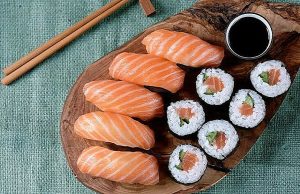
Sushi has various names that vary depending on its shape and ingredients.
2. Ramen: Currently, ramen is one of the most popular options for meals in Japan. It is composed of a bowl of wheat noodles and a soup that includes miso or soy sauce and several additional ingredients. The most frequently used ingredients are eggs, seaweed, green onions, and pork slices.
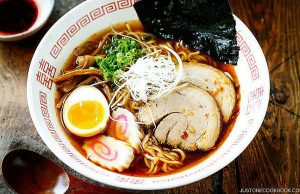
The most important ingredient in this meal is the soup. The flavor is the best. Ramen comes in a wide variety of options, and several regional versions have emerged all around Japan as a result. Just ramen would be enough to fill the entire Japanese food guide.
Recommended: Countries with the Most beautiful women in the world
3. Tempura: The classic Japanese dish known as tempura is made by deep-frying seafood or vegetables in a thin batter made from cake flour, cold water, and salt. The lumpy tempura batter is only barely mixed while being kept cold to ensure that it cooks with a crisp and fluffy texture. Most tempura is only lightly fried for a few seconds before being garnished with dipping sauce and daikon radish shreds. Various seafood, fish, and vegetables are used to produce tempura in Japan, but ebi (shrimp) is the most popular filling.
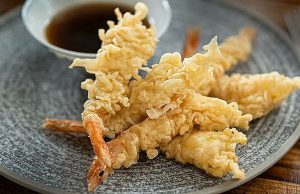
4. Sashimi: Sashimi, which is raw fish or meat that has been skillfully cut into thin slices, is arguably one of the most contentious meals in all of Japanese cuisine. It is frequently served with daikon radish, pickled ginger, wasabi, and soy sauce.
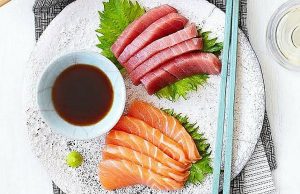
Sashimi varies from sushi in that sashimi is nearly completely made of raw fish and is not served with rice, while all sushi is made with vinegared rice. Sashimi must be made with fish that are as fresh as possible to reduce the possibility of contamination and enhance the flavor of the dish.
Recommended: Countries with highest unemployment rate in the world
5. Miso Soup: Most meals include miso soup as a side dish, and it goes well with practically every dish. Miso paste (fermented soybeans) and dashi (fish stock) are combined to create this soup. Pieces of tofu, onions, wakame seaweed, and occasionally veggies like sweet potatoes, carrots, and radishes, can all be found in this soup. It’s never offered as the main course.
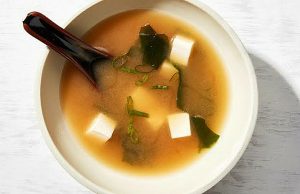
Always includes a bowl of rice and one or two other dishes. It’s not only delicious, but it’s also healthy. It is produced from fermented soybeans, a sort of food that is regarded as healthy in Japan.
6. Tofu: Tofu, especially silken tofu, is appreciated by everyone and is a common component of the traditional diet in Southeast Asian nations like Japan, even though tofu is primarily thought of in Western nations as a health food or vegetarian option.

Tofu is made by coagulating soy milk and pressing the resultant curds into blocks. These blocks are available in various firmness levels and can be consumed raw, cooked in hot pots, or fried into delectable aburaage as well as a garnish.
Recommended: Countries with the Most handsome men in the world
7. Curry Rice (Kare-Raisu): Kare-Raisu is a similarly well-liked, straightforward, and delectable cuisine that we can find in Japan. It is simply rice with curry, but the flavor is unmistakably unique from that of other curry dishes. You can use an array of meats and veggies to make Japanese curry. Onions, carrots, and sweet potatoes are the staple vegetables, and chicken, pork, beef, and even duck, are the meats used.
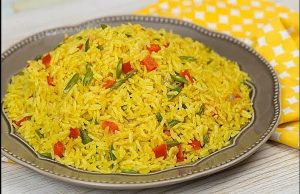
Curry comes in a variety of heat levels, with mild, normal, and hot being the most popular. Japanese curry is different from the Indian variations that people in the UK are more accustomed to since it is typically made more like a stew and has a sweeter flavor and texture.
8. Okonomiyaki: Although it is prepared similarly to a pancake on a griddle, okonomiyaki has a considerably wider variety of ingredients and is typically regarded as a savory dish. Yam, flour, and eggs are the traditional ingredients, but you may use virtually any other ingredient.
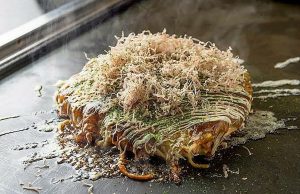
The most typical additions include beef, veggies, mochi, cheese, green onions, shrimp, and squid. In certain eateries, the experience is more participatory because the chef comes to the table and cooks it on a griddle whilst the diners assist him by adding additional ingredients.
Recommended: Programming Languages To Learn For Cyber Security 2023
9. Unagi: Unagi, or freshwater eel, is a common name. It shouldn’t be confused with saltwater anago or conger eels. Before the eel is cut apart and used to produce unagi, the head, and bones are removed. After that, the meat is skewered, roasted, broiled, and basted with kabayaki sauce (sweet soy sauce), all of which is done over charcoal. Grilled unagi is widely consumed in Japan as sushi or served over rice in dishes referred to as unagi donburi or unadon.
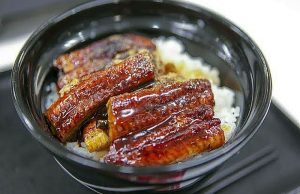
10. Udon: Udon noodles, one of the three main varieties of noodles eaten in Japan, are typically made using wheat flour and salty water. Thick and chewy, they are. Udon is frequently included in noodle soup, where they are provided in a flavorful soup broth with a variety of garnishes.
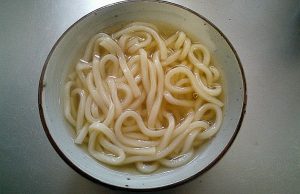
They can also be prepared in many various ways, such as by adding them to stir-fries or hot pots, or by serving them cold with a tsuyu or tentsuyu soup base on one side for dipping. The most well-known udon noodle soup dishes include kitsune udon, tempura udon, which is covered with tempura-battered fish and veggies, and chikara udon.
Recommended: Countries With More Women Than Men
Conclusion
Being an island country, Japan’s diet is mostly driven by seafood and provides a lot of variation by utilizing products in-season. Japanese cuisine is a treat for one’s eyes and even the stomach. It is consistently artistically presented and the result of years of history. Some of the top Japanese foods that everyone should eat are those that are listed above.

Edeh Samuel Chukwuemeka, ACMC, is a lawyer and a certified mediator/conciliator in Nigeria. He is also a developer with knowledge in various programming languages. Samuel is determined to leverage his skills in technology, SEO, and legal practice to revolutionize the legal profession worldwide by creating web and mobile applications that simplify legal research. Sam is also passionate about educating and providing valuable information to people.